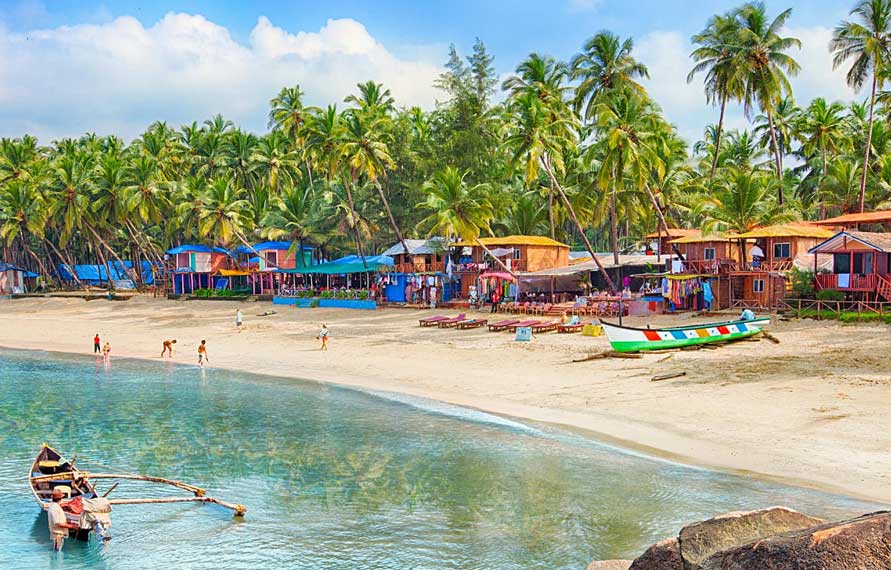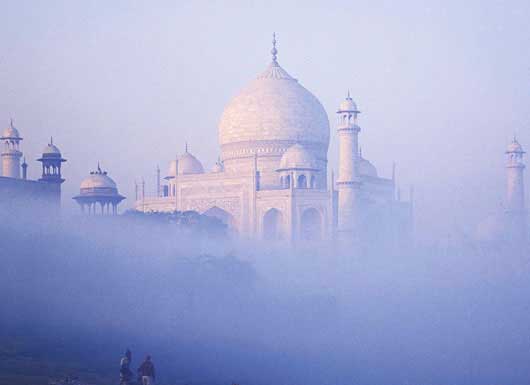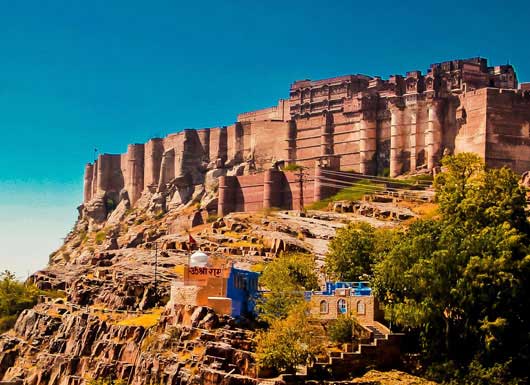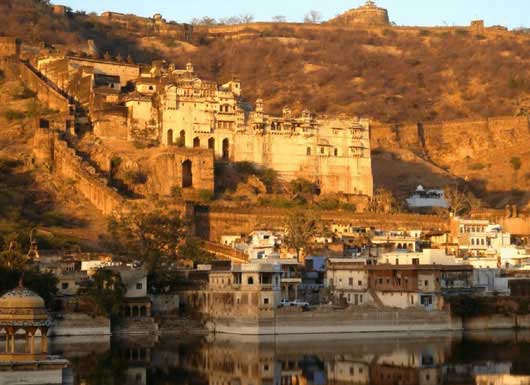Golden Triangle With Goa
Golden Triangle With Goa
Package Duration: 8 Nights and 9 Days
Places Covered: Delhi - Agra - Jaipur - Goa
Tour Overview
In this tour we have included Goa with the famous Golden Triangle Tour Package. Starting from New Delhi- Agra- Jaipur- Goa, all these four cities are having great culture, exquisite cuisines, remarkable architectures and the famous beach destination – Goa. This tour includes visit the breathtaking beauty of the Taj, the Rajput splendor of the "Pink City", and the strange amalgamation of the ancient and modern that go to make India's capital city. Goa is known for its striking landscape, famous beaches in India, astounding monuments and churches and bustling Goa nightlife.
Highlights:
- Food walk in Old Delhi
- Visit of magnificent Taj Mahal
- Elephant ride at Amber Fort Jaipur
- Evening Aarti at Birla Mandir, Jaipur
- A relaxing end on the beaches of Goa
Detailed Itinerary
Day 1: Arrive in Delhi
Arrive in Delhi today and get transferred in a private vehicle to your hotel where accommodation is held from 1400 hrs. Check-in and spend the rest of the day to explore the bustling national capital. Overnight in the hotel.
Delhi offers a harmonious blend of architecture and history. From remnants of the Mughal empire and British Raj to contemporary India, you can experience it all in the capital. The city is sure to charm you with its eclectic mix of the old and new – from magnificent monuments to bustling Old Delhi markets and stunning high rises.
Day 2: A day in Delhi
Breakfast at the hotel. Proceed for sightseeing tour of Delhi which will start with visit of Old Delhi, where you will see Red Fort (from outside) Jama Masjid , Chandni Chowk Market (closed on all Sundays) and Raj Ghat. Also take a food walk in the Chandni Chowk market. After visit of Old Delhi drive towards New Delhi en-route you will drive past President’s Palace, Government buildings and India Gate. In the afternoon visit the Humayun’s Tomb and Qutub Minar complex. Overnight in the hotel.
Jama Masjid is a mosque in Old Delhi, constructed in 1650–56 by the Mughal emperor Shah JahÄn, a noted patron of Islamic architecture whose most famous work is the Taj Mahal, in Agra.
This vibrant market came to existence when the fifth Mughal Emperor, Shah Jahan, shifted his capital from Agra to Shahjahanabad, now Old Delhi, in the mid 17th century. While Chandni Chowk or the moonlit square no longer bears the magnificence of the bygone era, its importance in the annals of Delhi will never be lost.
The food walk in Old Delhi is a great experience to and the best way to see and taste Old Delhi. The dishes one can savor in Old Delhi Food Walk are large, thick and juicy jalebis, glistening with ghee; Aloo chaat crisp fried potato cutlets dunked in a melange of chutneys and smattered with onions and spices ; varieties of stuffed paranthas potato, onion, cottage cheese, cauliflower, radish, dry fruits and many more….
Humanyun’s Tomb was built in 1565 A.D. nine years after the death of Humayun, by his senior widow Bega Begam. Inside the walled enclosure the most notable features are the garden squares (chaharbagh) with pathways water channels, centrally located well proportional mausoleum topped by double dome.
Qutab Minar is a soaring, 73 m-high tower of victory, built in 1193 by Qutab-ud-din Aibak immediately after the defeat of Delhi's last Hindu kingdom. The tower has five distinct storeys, each marked by a projecting balcony
Day 3: Drive to Agra, en-route Sikandra
Today morning after breakfast drive to Agra (approx. 5 hours), en-route visit Sikandra – Akbar’s Tomb. Arrive in Agra and check – in at the hotel. In the afternoon proceed for half day tour of the magnificent Red Fort or Agra Fort and the Moonlight Garden (Mehtab Bagh). Overnight at the hotel.
Sikandra is an outstanding sandstone and marble tomb commemorates the greatest of the Mughal emperors. The huge courtyard is entered through a stunning gateway. It has three-storey minarets at each corner and is built of red sandstone strikingly inlaid with white-marble geometric patterns.
Known to exist since prehistoric times, Agra came into full flower during the 16th and 17th centuries as one of the four capitals of Mughal dynasty. It was in Agra that the artistic excellence of the Mughals reached its zenith at a time that coincided with the political high water mark of their vast and expanding empire.
Agra Fort was begun by Akbar between 1565 and 1573. It is situated on the west bank of the Yamuna River, about 2km upstream from the Taj Mahal. Akbar built the fort of sandstone; his grandson Shah Jahan, the builder of the Taj Mahal, constructed palaces of white marble within the fort itself.
The Mehtab Bagh or the moonlight garden, was the last of the eleven Mughal-built gardens along the Yamuna river opposite to the Taj Mahal and the Agra Fort. Built during the period 1631- 1635 A.D., Mehtab Bagh literally means “a moonlit pleasure garden”.
Day 4: Drive to Jaipur , en-route Fatehpur Sikri
After an early breakfast proceed to visit the Taj Mahal (closed on Fridays) and after visit leave for Jaipur (approx. 7 hours). En – route stop for visiting Abhaneri Stepwell and celebrated medieval Mughal city Fatehpur Sikri. Arrive in Jaipur and check – in at the hotel. Overnight at the hotel.
The Taj Mahal is an enormous mausoleum complex commissioned in 1632 by the Mughal emperor Shah Jahan to house the remains of his beloved wife. Constructed over a 20-year period on the southern bank of the Yamuna River in Agra, the famed complex is one of the most outstanding examples of Mughal architecture, which combined Indian, Persian and Islamic influences.
Chand Baori or Abhaneri is one of Rajasthan's most spectacular baori (step-wells). It is believed to have been built by King Chand, a local Rajput ruler, in the 10th-century.
Fatehpur Sikri a magnificent fortified ancient city, 40km west of Agra, was the short-lived capital of the Mughal empire between 1572 and 1585, during the reign of Emperor Akbar.
An erstwhile princely state and now the capital of modern Rajasthan. Jaipur is popularly known as the “Pink City” because of the rose coloured wash that adorns most buildings in the old quarter and it is the first planned city in the country.”
Day 5: A day in Jaipur
After breakfast visit Amber Fort, the grandest way to reach Amber is on an elephant back. Later we proceed to visit the City Palace and Observatory. And we also stop for some photos from across the road of Hawa Mahal – the Palace of Winds. In evening attend aarti or a prayer ceremony at Birla Mandir. Overnight in the hotel.
The City Palace reflects Rajput, Mughal and European architectural styles. The Palace has been designed according to a 'grid style' and houses various structures such as, 'Chandra Mahal', 'Mubarak Mahal', 'Diwan-I-Khas' and the 'Govind Dev Ji Temple. The walls and gates are ornately designed to Mughal style, with various murals, lattice and mirrors adorning them from sides.
The Jaipur observatory is by far the most elaborate and complete of Jai Singh’s all other Observatories. The observatory occupies a plot of land just outside the City Palace.
Jaipur’s most photographed landmark, the Hawa Mahal is an extraordinary pink-painted delicately honeycombed hive that rises a dizzying five storeys. It was constructed in 1799 by Maharaja Sawai Pratap Singh to enable ladies of the royal household to watch the life and processions of the city.
The Birla Temple, of Jaipur is built of pure white marble, whose interiors contain, beautifully sculpted idols of Lord Vishnu and Goddess Lakshmi, as well as other Hindu Gods. Commonly considered a true work of art, this temple forms a wonderful backdrop to witness a traditional ceremony. An Aarti represents the elements of fire, earth, water and air as well as the senses, the priest has a tray with a diya (lamp), offerings of food, water, flowers, incense and a small bell.
Day 6: Flight to Goa
After breakfast transfer to the Jaipur Airport for flight SG 923 departing at 1305 hrs to Goa. Arrive in Goa at 1630hrs. You will be met on arrival and transferred to your hotel. Overnight stay in the hotel.
Goa’s biggest draw is undoubtedly its virtually uninterrupted string of golden-sand beaches. This coastline stretches along the Arabian Sea from the tip to the toe of the state, and each beach community has developed its own personality and reputation since the hippie days of the sixties. They cater to every tropical whim: choose from backpacker Arambol or bolder, brasher Baga; the palm-fringed sands of Palolem, hippie market bliss at Anjuna or lovely, laid-back Mandrem; expansive groomed sands in front of fancy five-star resorts or hidden crescent coves, where the only footprints will be the scuttling crabs' and your own.
Day 7: In Goa
Breakfast at the hotel. Morning half day sightseeing tour of North Goa. Overnight stay in the hotel.
If you want to visit North Goa sightseeing some of the best places on the maps are the Basilica of Bom Jesus which contains the mortal remains of St. Francis Xavier and is in close proximity to Panjim. Mapusa market comes second only to Panjim with its famous, “Mapusa Friday Market”. The 500 year old Harvalem waterfall is located in Bicholim and has a temple dedicated to Lord Shiva. Calangute and Baga are called the queen of beaches in Goa.
Day 8: In Goa
Breakfast at the hotel. At leisure on the beaches of Goa. Overnight stay in the hotel.
Day 9: Final departure
Breakfast at the hotel. Morning is at leisure. In the Afternoon transfer to the Goa Airport for flight to onwards destination.
Customized Tours Booking?
This Tour can be customized according to your travel needs & requirement.
Book Now









